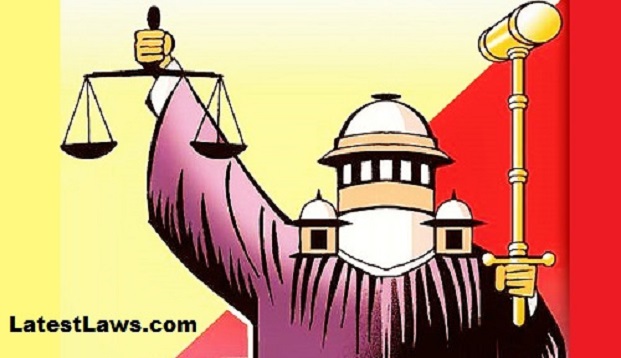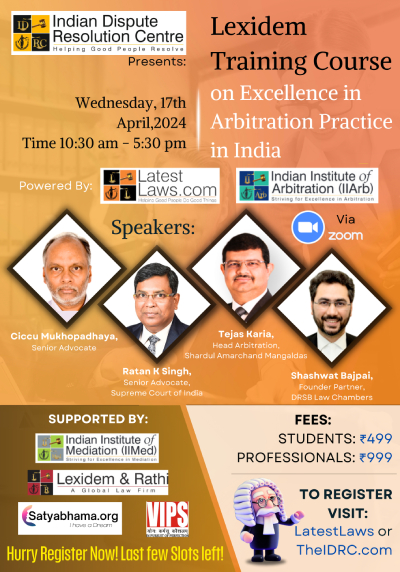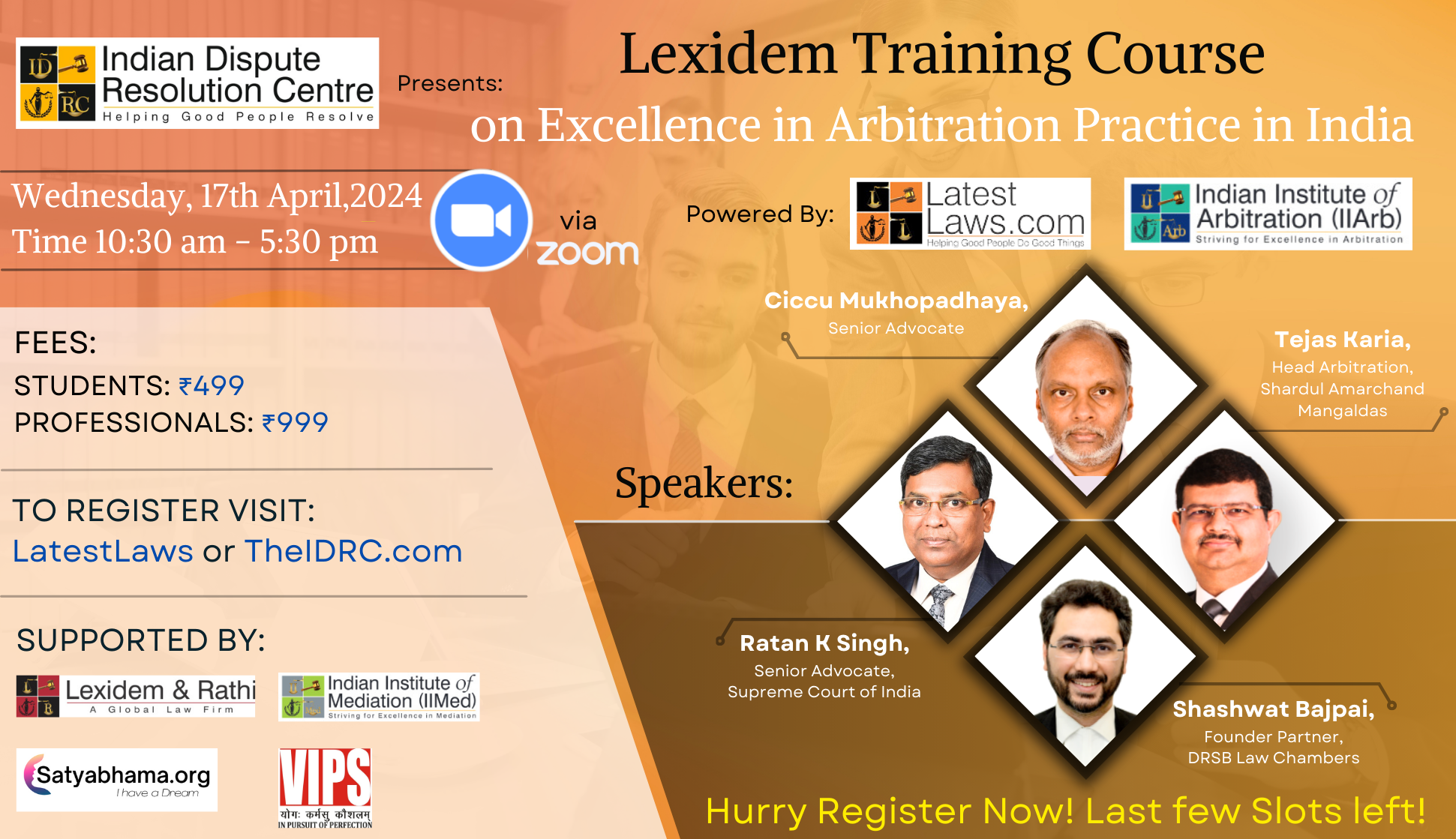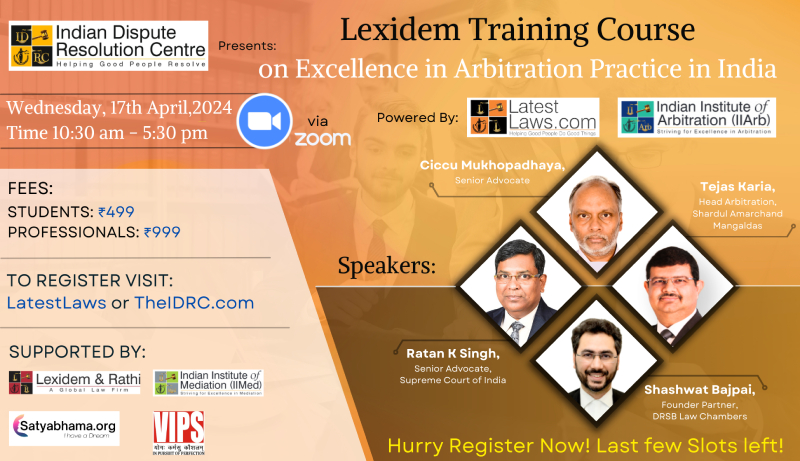Kesavananda Bharati vs State of Kerala, (1973) 4 SCC 225 (Download PDF)
CASE ANALYSIS:
KESAVANANDA BHARATI V. STATE OF KERALA[1]
INTRODUCTION:
The Kesavananda Bharati case was popularly known as fundamental rights case and also the serious conflict between the Judiciary and the Government. Under this case Supreme Court of India outlined the Basic Structure doctrine of the Constitution which forms and gives basic powers to the Indian Judiciary to review or to amend the provisions of the constitution enacted by the Parliament of India which conflict with or seek to alter the basic structure of the constitution. The fundamental question dealt in Kesavananda Bharati v State of Kerala is whether the power to amend the constitution is an unlimited, or there is identifiable parameters regarding powers to amend the constitution.HOLDING OF THE CASE:
There are certain principles within the framework of Indian Constitution which are inviolable and hence cannot be amended by the Parliament. These principles were commonly termed as Basic Structure.
BACKGROUND:
Before moving to the facts and Judgment of the case one must know the background of the case:
- The Bihar Land Reforms Act, 1950 which was in Contravention of then Fundamental Right to Property (Article 31). It was hit by 13(3) as it was Infringing Article 31 (Part III, Fundamental Rights). The Act was tested in High Court which held the demonstration to be Unconstitutional for being violative of Article 14 of the Constitution.
- Consequently keeping in mind the end goal to ensure and Validate Zamindari Abolition laws, the Government made First Amendment of the Constitution of India which rolled out a few improvements to the Fundamental Rights arrangements of the Constitution. Article 31-Anand 31 B was likewise included. Ninth Schedule was embedded which ensures any Legislation embedded inside the Schedule, from Judicial audit.
- Henceforth the development to Kesavananda was set apart by a progression of Cases and choices that set the phase for the case itself. At the center of every one of these cases was the essential inquiry: Was Parliament's energy to Amend the Constitution boundless, since it spoken to the will of the general population and it’s Majority, or was that Power delineated when it went to certain Fundamental Rights of the general population?
FACTS OF THE CASE:
- In February 1970, Swami HH Sri Kesavananda Bharati, Senior head of "Edneer Mutt" – a Hindu Mutt arranged in Edneer, a town in Kasaragod Region of Kerala, challenged that the Kerala government's endeavors, under the two state land reform acts, to force limitations on the administration of its property.
- Despite of the fact that the state conjured its power under Article 21, an Indian legal scholar, Nanabhoy Palkhivala, persuaded the Swami into filing his petition of under Article 26, concerning the privilege to oversee religiously claimed property without government obstruction.
- The enormous battle was foreseen. Real revisions to the Constitution (the 24th, 25th, 26th and 29th) had been sanctioned by Indira Gandhi's legislature through Parliament to get over the judgments of the Preeminent Court in R.C. Cooper (1970), Madhavrao Scindia (1970) and Golak Nath.
- The first had struck down bank nationalization, the second had abrogated the nullification of privy satchels of previous rulers and the third had held that the revising force couldn't touch Principal Rights.
- Every one of these corrections was under test in Kesavananda. Since Golak Nath was chosen by eleven judges, a bigger seat was required to test its rightness. Thus 13 judges were to sit on the Kesavananda case.
- Despite the fact that the hearings expended five months, the result would significantly influence India's popularity based procedures.
ANALYSIS OF THE CASE:The Supreme Court of India has reviewed the decision in Golaknath v. State of Punjab, and considered the validity of the 24th, 25th, 26th and 29th amendments. The case was of Kesavananda was heard by the largest ever Constitutional Bench of 13 Judges. The Bench gave eleven separate judgements which are agreed on some point and disagreed on others.
The eleven separate Judgments are summarized but before that there are series of cases which was review by the Judges of Supreme Court under Kesavanada Case are:
SERIES OF THE CASE:
- Shankari Prasad vs. Union of India (1951)
The sacred legitimacy of first amendment (1951), which shortened the privilege to property, was tested. The SC decided out that the ability to revise the Constitution under Article 368 likewise incorporated the ability to change basic rights and that "law" in Article 13 (8) includes only an ordinary law made in exercise of the authoritative powers and does exclude Sacred correction which is made in exercise of constituent power. In this manner, an Established revision will be substantial regardless of whether it shortens or takes any of the key rights.
- Sajjan Singh V. State of Rajasthan (1965)
The validity of the 17th Amendment Act, 1964 (which changed the definition of an "Estate" given in article 31A of the Constitution so as to include therein Lands held under ryotwari Settlement in addition to other Lands in respect of which Provisions are normally made in Land Reform Enactments. The Amendment also added 44 additional State Enactments relating to land reforms to the Ninth Schedule to the Constitution in order to secure their Constitutional Validity and prevent them from being challenged before the judiciary on the ground that they are inconsistent with any of the Provisions of Part III of the Constitution relating to Fundamental Rights. This was challenged on the ground that one of the acts inserted by the amendment in the 9th Schedule affected the petitioner on the basis that the amendment fell within the purview of Article 368.
Supreme Court approved the judgment in Shankari Prasad case and held that on Article 13 (2) the case was rightly decided. Amendment includes Amendment to all provisions of the Constitution.
- Golaknath V. State of Punjab (1967)
The Hon'ble Supreme Court prospectively overruled its decision in Shankari Prasad and Sajjan Singh cases and held that Parliament had no power to amend Part III of the Constitution so as to abridge or take away any of the Fundamental Rights. It also added that Article 368 merely lays down the procedure for the purpose of amendment. Further, the Court said that an amendment is a law under Article 13(2) of the Constitution of India and if it violates any fundamental right, it may be declared void. Therefore, amendments which "take away or abridge" the Fundamental Rights provisions cannot be passed. Article 368 does not contain a power to amend the constitution but only a procedure.
To nullify the Golaknath verdict, Parliament enacted the 24th Amendment to the Constitution, laying down that its powers to amend the Constitution were unrestricted and unlimited. Finally all the issues related to it were challenged in Keshavanand Case.
- C Cooper V. Union of India:
The Supreme Court has struck down with the Bank Nationalization Act, 1969 because of the compensation element of the enactment, while upholding the right of the Parliament to nationalize the banks. The Government then attempted to abolish Privy Purses, which were payments promised to the erstwhile princes by the Indian Government at the time of Independence.
- Madhav Rao Scindia v. Union of India:
The Supreme Court of India has again struck down with the Presidential order, which resulted in the above abolition.ISSUES:
- Whether the constitutional amendment as per Art. 368 are applicable to Fundamental Rights also?
Sikri C. J. held that the fundamental rights importance of the freedom has given supreme priority under the constitution and that could not be amended beyond existence. According, to the said Judge, Fundamental Rights conferred under Part 3rd of the constitution cannot be abolished, though the reasonable abolishment of such rights could affect the public interest at large. There are some limitations on the part of the amendment and therefore, according to the Chief Justice, the expression mentioned under Art. 368 “Amendment of this Constitution” which means any addition or any change of the provisions of the constitutions within the broad contours of the preamble, made in order to carry out the basic objectives of the constitution. According to the Preamble of the Constitution, every provision of the constitution was free to amend provide that the basic structure or the foundation of the constitution should not get destroyed or damaged.
According, to the learned Judge, Part 3rd and 4th of the constitution i.e. Fundamental Rights and Directive Principles must be balanced and harmonized which forms the basic element of the constitution which cannot be amended. The word “Amendment” under Art. 368 are used in such a manner which preserves the power of the Parliament to amend the constitution, but they can amend in such a way which cannot destroy or damaged the basic structure of the constitution. Thus, it’s a visible limitation imposed on the power of the Parliament to abolished or altered the foundation of the constitution.
Hegde and Mukherjea, JJ.: It was held that the basic structure must remain constant. According to the learned Judge, the broad outline of the basic and fundamental elements of the constitution are demarcated in the preamble of the constitution and the Parliament has no power to abolished or to altered any basic part of the fundamental features. The learned Judge invalidated Art. 31C.
Jaganmohan Reddy, J. : Held that the word ‘ Amendment’ is in a sense which permits the changes but which is in contrary to abolishment and destruction of the basic structure. According to the learned Judge some of the basic fundamental principles were mention under the preamble i.e. Justice, Equality before law, Freedom of Speech and Expression and Opportunity. The word “Amendment” will not give any right to destroy the basic principles.
In conclusion, the learned Judge held that the power of amendment was wide, and it did not said that to totally abolished or damage any of the basic fundamental principles of the constitution, subject to such limitations Parliament have power to alter or amend any or every provision of the constitution.
- Whether 24th Amendment act, 1971 is valid?
The 24th Amendment was effected to abolish the Supreme Court ruling in Golaknath V. State of Punjab. The Supreme Court pronounced its ruling, by a majority of 6-5 Judges. The respected court held that an amendment of the constitution is a legislative process. And that the amendment under law stated under art. 13 of the constitution and therefore, if an amendment “ alter, takes away or abolished” any of fundamental right mentioned under part 3rd of the constitution, is void. Article 13(2) stated as “The state shall not make any law which takes away or abridges the right conferred by this part and any law made in contravention of this clause shall, to the extent of contravention, be void.” The court also ruled that the Fundamental Rights conferred under part 3rd of the constitution has also given supreme position and which are kept beyond the reach of the Parliament.
The Supreme Court of India reviewed the decision in 1971, held and considered the validity of the 24th Amendment, 1971.
- Whether Section 2(a), 2(b) and Section 3 of 25th Amendment, 1971 is valid?
The Court upheld Section 2(a) and 2(b), and the first part of section 3 of the 25th Amendment as valid. However, the second part namely "and no law containing a declaration that it is for giving effect to such policy shall be called in question in any court on the ground that it does not give effect to such policy" was declared unconstitutional.
- Whether 29th Amendment Act, 1971 is valid?
The Supreme Court upheld the validity of 29th Amendment, 1971.
- Whether the Article 31 C of the constitution is valid or not?
The majority of Judges related to the matter of Article 31 C of the constitution which was added by the 25th Amendment is void. Whereas, Justice Reddy stated that the parts of the article 31 C is valid. However, Justice Khanna, held that the first part of the article 31 C was valid, whereas, the second part was void.
- What constituted the “Basic Structure” in Kesavananda Bharati, and was there a Ratio?
It is difficult to say that the Judges have delivered their decisions with majority view in Kesavananda Bharati case agreed with each other on what constituted the “basic structure” of the constitution or why Parliament has limited power to amend the basic fundamental principles of the constitution. Majority have differing in opinion are:
- Chief Justice Sarv Mittra Sikri,: According to the said Justice, the basic structure consists of the follows:
- The constitution must be Supreme.
- The form of Government must be Republic and Democratic.
- There must be Secularism.
- Separation of powers must be maintained.
- Federal character of the constitution.
- Justice Shelat and Justice Grover in their opinion added three features to the Chief Justice's list:
- The said Judges, mainly focused on the dignity of the individuals.
- Unity and integrity of India must be maintained.
- Mandate to build a welfare state mentioned under the Directive Principles of the State Policy.
- Sovereignty of the country must be maintained.
- Justice Hedge and justice Mukherjee held that though the power of Parliament to amend the principles of the constitution is wide, but it does allow them to destroy the basic elements of the constitution. The both said Judges in their opinion states as follows:
- There must be unity in the country.
- To set up sovereign and democratic republic.
- To secure the citizens of India.
- Individual freedom must be there.
- Justice Jaganmohan Reddy, held and majorly preferred to refer the preamble of the Constitution, and stated as follows:
- Sovereign, democratic and republican nature,
- The equality of the status,
- Social, economic and political justice,
- Liberty of thoughts and expression,
- Belief, faith and worship,
Should not be amended by the Parliament.
EFFECTS OF THE CASE:
Kesavanand Bharati case over ruled the Golaknath case but it did not re-established the supremacy of the parliament. As it is stated, that the fundamental rights of the constitution can be amended by the Parliament, but not all the rights of the constitution. Those fundamental rights which formed the basic structure of the constitution cannot be abridged. In Golaknath case, they gave the priority to the fundamental rights only. Whereas, in Kesavanand Bharati case, it recognizes some other provisions of the constitution also and stated that if, such provisions form the basic structure then it cannot be amended. It is also stated that under the virtue of Art. 368, Parliament cannot rewrite the whole constitution and bring in a new form.
By invalidating the part of Art. 31-C in Kesavanand Bharati case, it prevented the State Legislature from exercising power to virtually amended the constitution. Art. 31-C lays down that if a state legislature makes a law which contains a declaration that it is to giving effect to the policy contained in Art. 39(b) and Art. 39(c) then no court may scrutinize it. This, a state legislature could make a review proof law.
Kesavanand Bharati case, is an example of judicial creativity of its first order. It protected our Indian Constitution by passing a 2/3 majority which may encourage by narrow party and personal interest. The basic feature cannot be altered, abolished or abridged.
SIGNIFICANCE OF THE DOCTRINE:
The ambiguity shows in the doctrine, as well as that of the ratio in Kesavananda Bharati, resulted in various challenges both to and under the doctrine before the Supreme Court. The period following Kesavananda Bharati was one where the doctrine has evolved on a case-to-case basis, resulting in a gradual expansion of the doctrine.
In Indira Gandhi v. Raj Narain, Constitutional amendment to regularise Prime Minister Indira Gandhi’s election was struck down by citing the basic features of democracy, rule of law and equality.
In Minerva Mills v. Union of India, the Parliament of India, through the Constitution (42nd Amendment) Act, 1976, attempted to Kesavananda Bharati by making Parliamentary power under constitution was unlimited. The Court in this case struck down the amendment on the ground that the judicial review of Parliamentary enactments, and the limitation of Parliamentary power to amend the Constitution, were itself part of the basic structure of the Constitution.
Coelho v State of Tamil Nadu, the Supreme Court held that all laws and provisions of the constitution directly or indirectly were related to the fundamental rights, and which are the part of the basic structure. Henceforth, every element of any law which is subjected to be amended must be tested and it should not abridge any of the basic structure of the constitution.
Verdict:
The 703-pages judgment revealed the different opinions of the Judges. There are wafer thin majority of 7:6, and it was held that Parliament could amend any part of the Indian Constitution so long as it did not alter or amend or abridge “the basic structure or essential features or foundation of the Constitution.” This was the inherent and implied limitation on the amending power of Parliament. This basic structure doctrine, as future events showed, saved Indian democracy and Kesavananda Bharati will always occupy a hallowed place in our constitutional history.
[1] (1973) 4 SCC 225
The Authors, Ayushi Modi is a 5th Year student and Rohan Upadhyay is a 3rd Year student of Bhartiya Vidyapeeth Deemed University, New Law College, Pune.
Kesavananda Bharati vs State of Kerala, (1973) 4 SCC 225 by Latest Laws Team on Scribd
Picture Source :




























